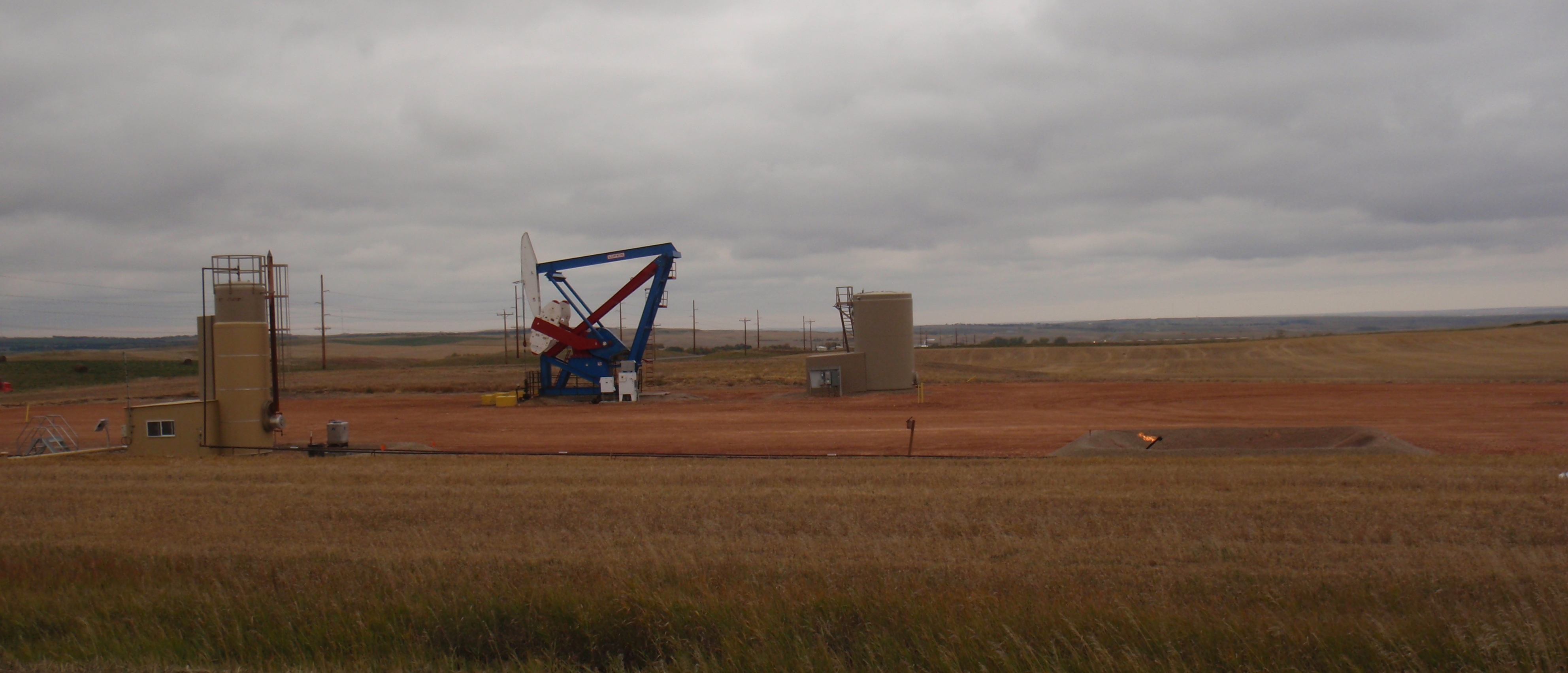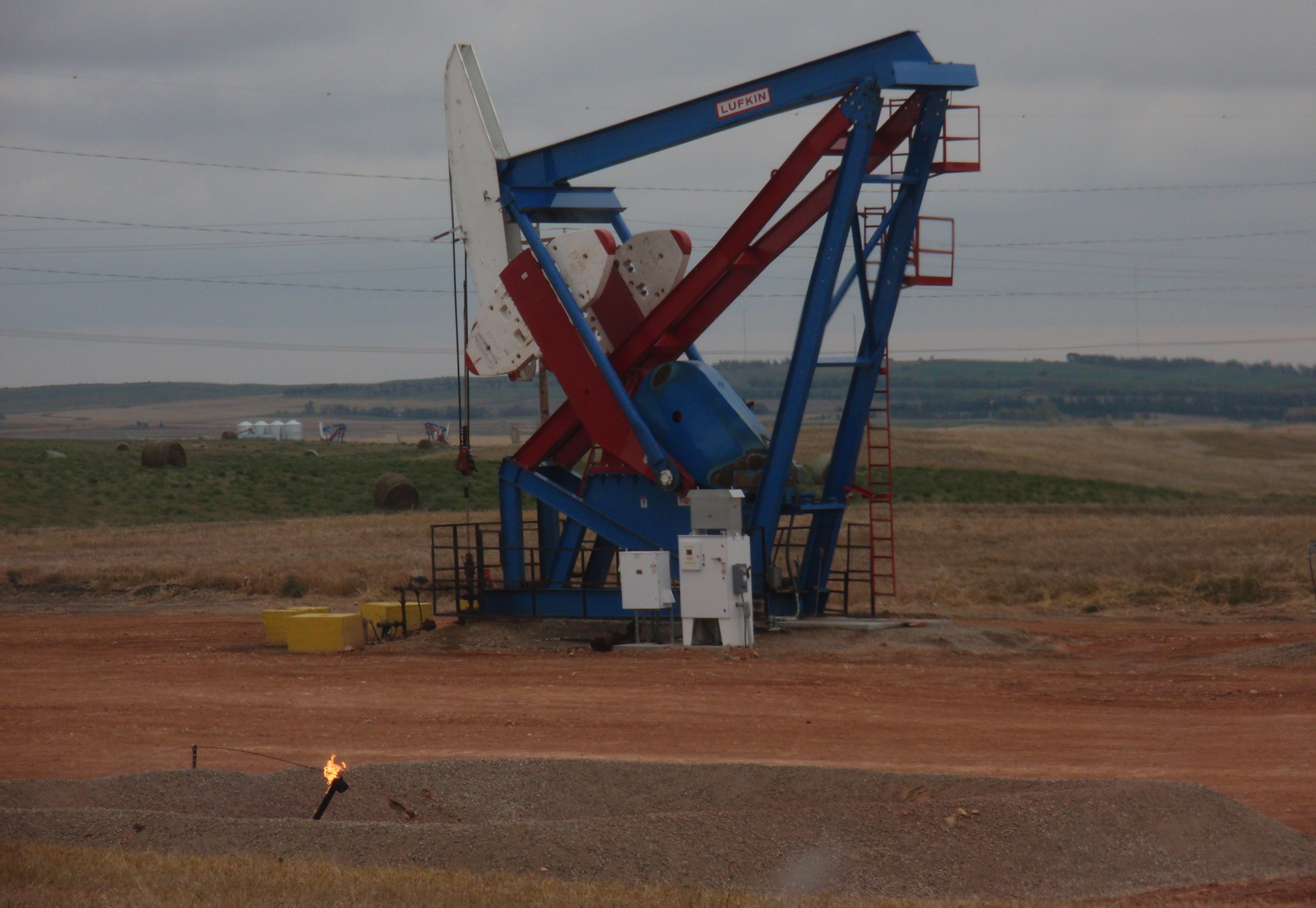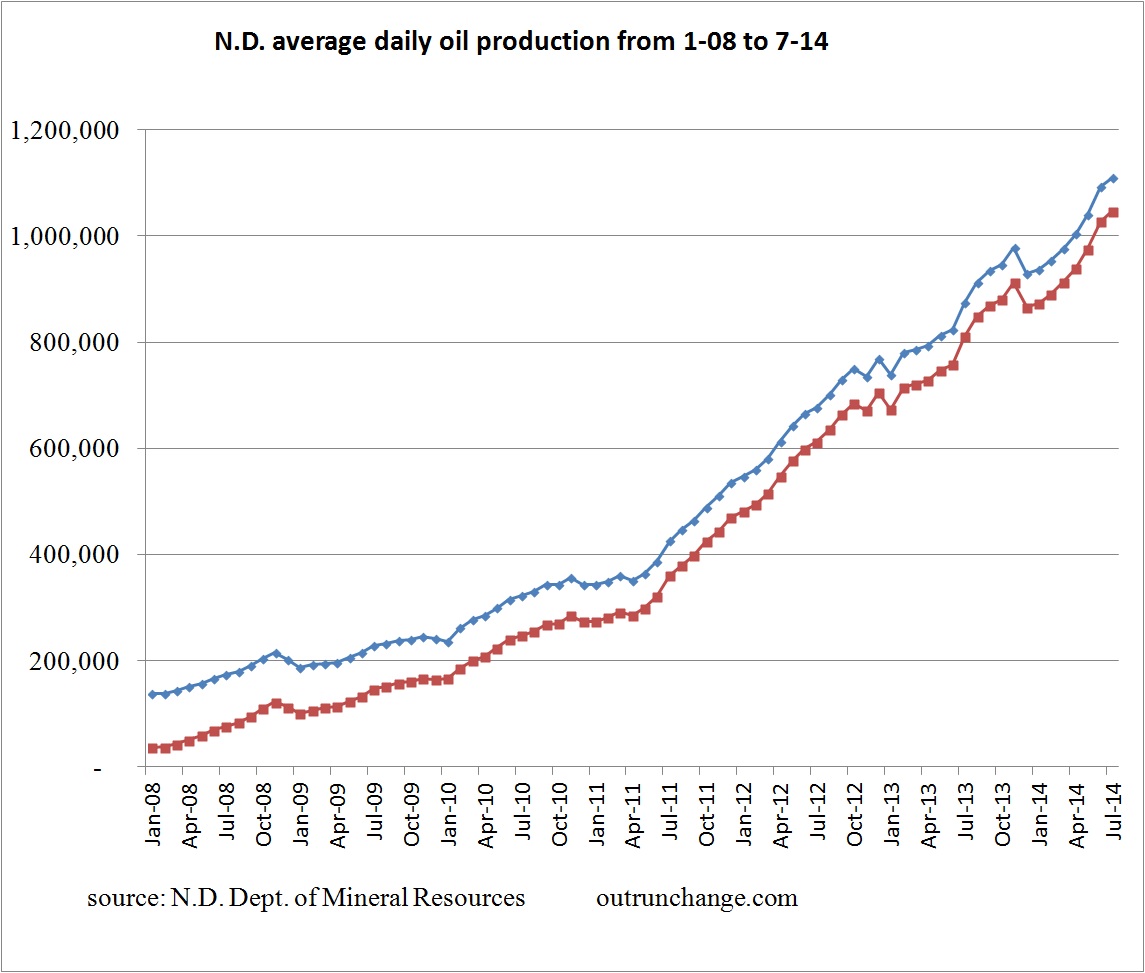(photo by James Ulvog taken in October 2013)
(Photo by James Ulvog, closeup of above pump; notice flare pit in foreground)
Production in North Dakota in July was 1,110,653 bopd, an increase of “only” 1.66% over the slightly revised June number of 1,092,519 bopd. Bakken only production was only up 1.9%.
(Update at bottom of post about that 5% increase for the month.)
Here’s the graph:
I say “only” because Mr. Helms was expecting an increase of 5% for each of the summer months.
That is an increase of 236K bopd since July 2013, or up 29.2% year-over-year.
Put another way, that is an extra 33,600,000 barrels of oil more than if output has stayed at the July production rate.
The Bentek forecast of three weeks ago was off about 90K bopd. Here is was I posted previously:
Here is an early estimate for the July numbers. On 8/25, Bentek Energy issued a press release: Production from Bakken, Eagle Ford Rose 3.4% in July. Their prediction is
“Crude oil production in the North Dakota section of the Bakken shale formation of the Williston Basin averaged nearly 1.2 million b/d in July, according to Bentek.”
… Bentek released their estimate on August 25.
An increase from 1.09M bopd to 1.11M bopd is 18,134 barrels per day. The Bentek forecast was to go from 1.09M bopd to about 1.2M bopd, which would be about 110,000 barrels a day. Oops. Only off by a factor of 6. Sounds like one of my predictions.
Update: What about those headlines declaring a 5% increase for the month?
That is based on total production for the month. That means without an adjustment for number of days in the month.
Average daily production increased from 1,092,519 bopd to 1,110,653 bopd, which is a 1.66% jump. Total production for the month increased from 32,778,524 barrels for 30 days in June to 34,430,241 barrels for 31 days in July. That would be the alleged 5.0% increase. However, if production was the exact same amount every day of both months, in other words, no real increase, then total reported production would have increased by 3.3%.
So using that same sloppy methodology, I just calculated that production in February 2014 dropped by 7.9 percent. Of course, that also means production in March (31 days instead of 28!) increased by 13.4%.
You can go with those numbers.
Or you could look at the average daily production, which shows a 1.86% increase in February and a 2.36% increase in March.
Take your pick.


